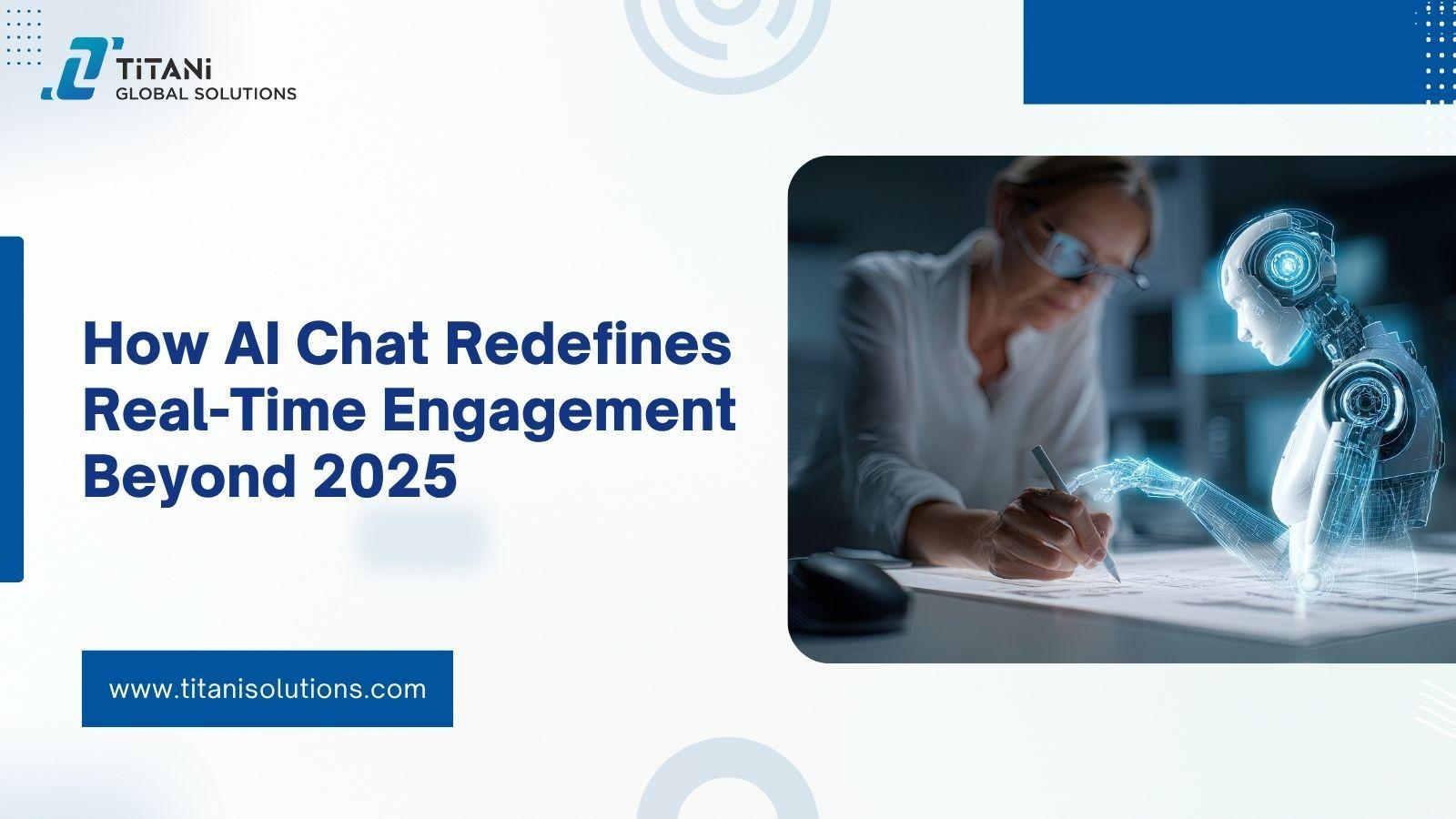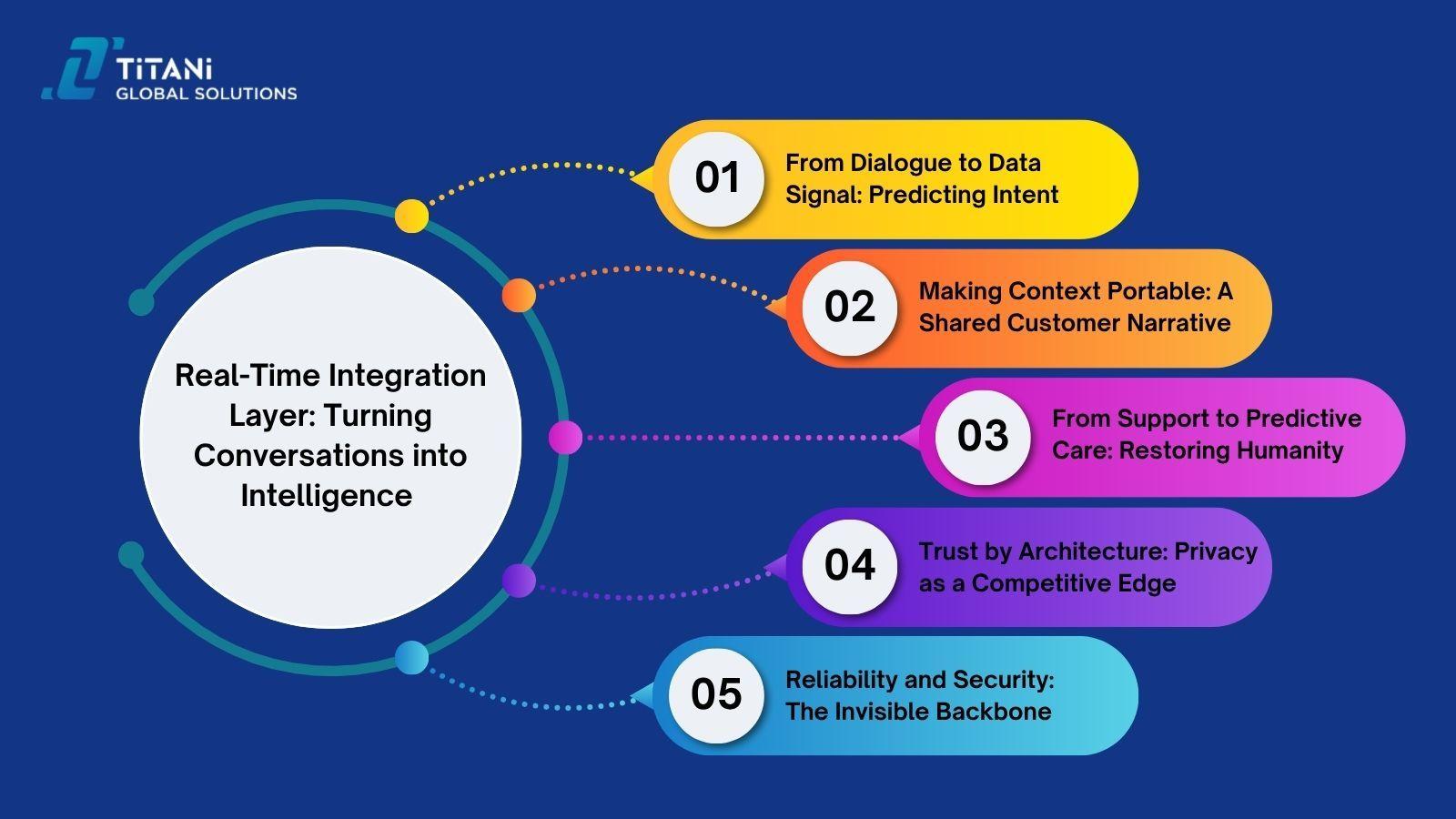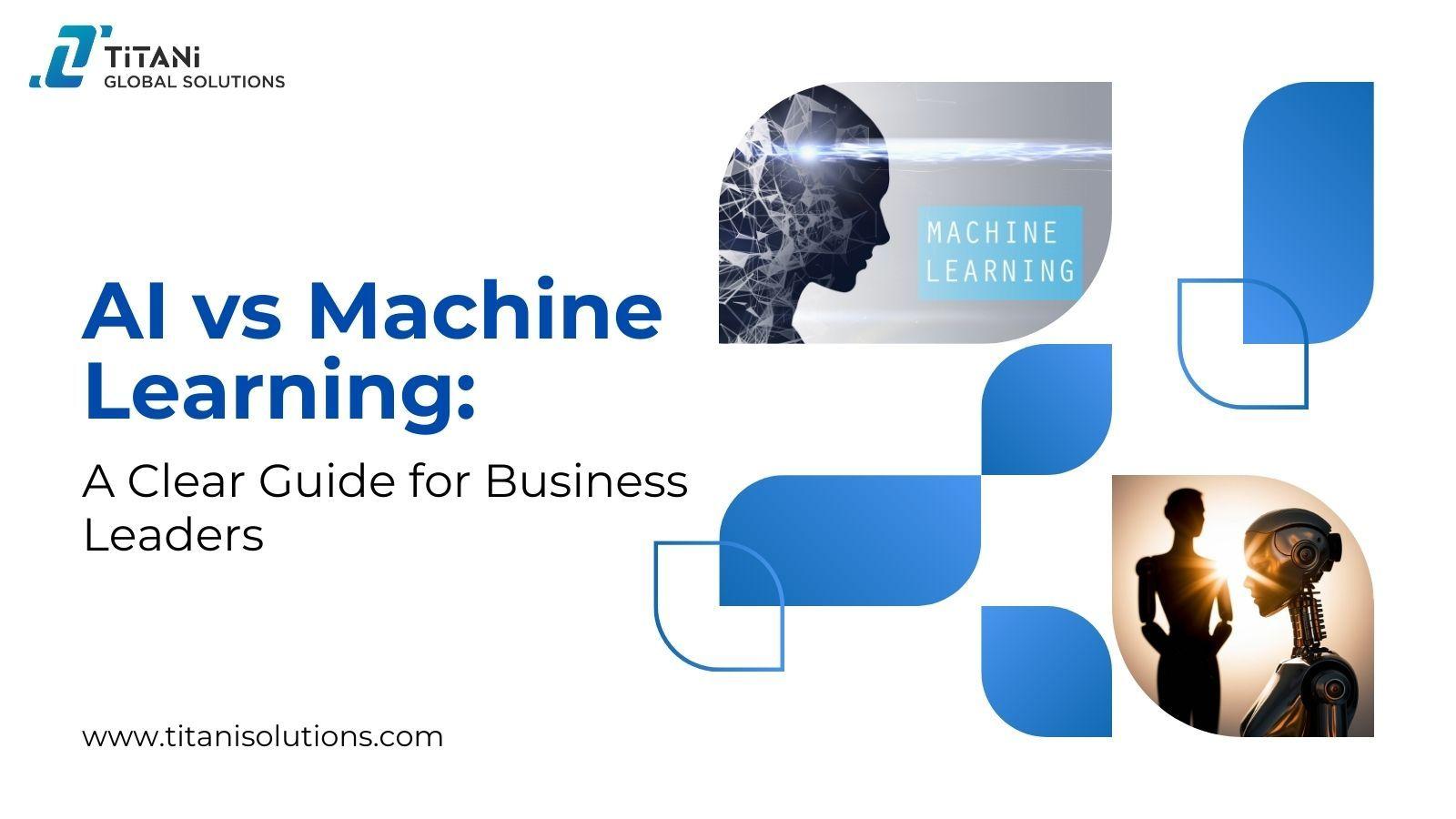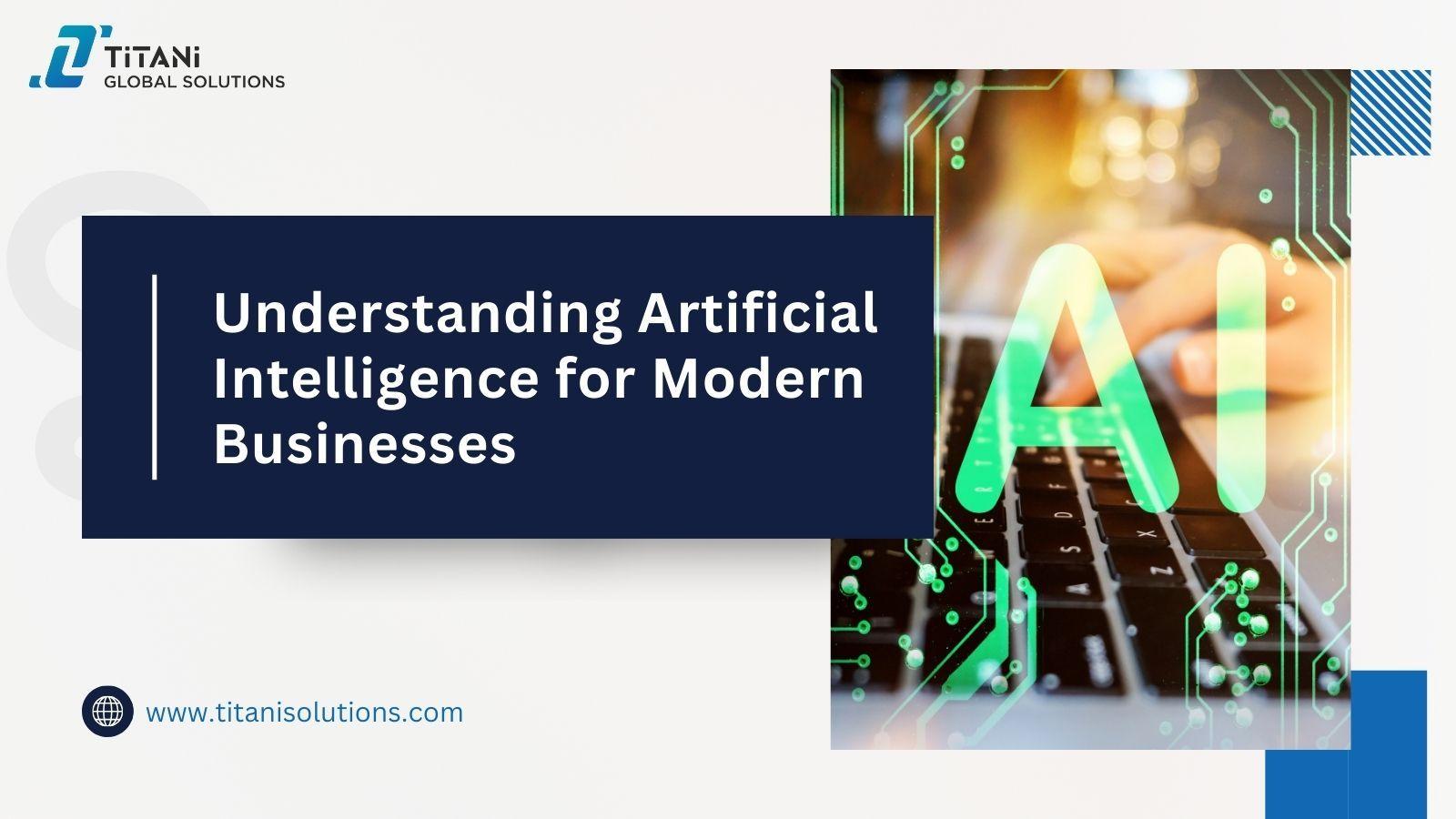Summary
Real-time engagement is being redefined — in 2025 and beyond, success isn’t about replying first, but about understanding faster.
AI chat systems now blend empathy with intelligence, interpreting intent, emotion, and context to create interactions that feel truly human.
Context-aware automation replaces interruption with intuition, transforming every message into a moment of relevance and trust.
Integrated CRM and analytics connections turn conversations into actionable insights, driving measurable improvements in lead quality and loyalty.
Data privacy and ethical AI design have become new competitive advantages — compliance, transparency, and auditability now shape customer confidence.
Enterprises that master “Understanding > Speed” will lead the next era of customer engagement, combining fast action with meaningful connection.

We’ve all been there — waiting for a reply that never comes fast enough. In a world where three seconds can decide whether a customer stays or leaves, speed feels personal. Real-time engagement isn’t just a metric anymore; it’s how trust begins.
At Titani, we believe AI chat should do more than answer questions — it should understand people. It listens to intent, reads subtle behaviour, and responds in ways that feel human, not robotic. When emotion or expertise matters most, it connects customers to the right person instantly.
That’s what turns a chat into a conversation — and a conversation into loyalty.
In this guide, we’ll show you how to make that happen: how event-driven triggers, guided flows, and seamless CRM connections can turn every real-time moment into measurable value. And because speed means nothing without trust, you’ll see how our AI systems are built with transparency, safety, and auditability — aligned with the NIST AI Risk Management Framework.
Because in 2025, real-time engagement isn’t about who replies first — it’s about who understands faster.
Redefining Real-Time Engagement: Why “Understanding > Speed”
For years, the term real-time was synonymous with speed — the faster you replied, the better the experience. But in 2025, that formula has changed. Speed may capture attention, but understanding is what earns loyalty.
Modern customers no longer compare your response time to competitors; they compare it to their last best experience — often from digital leaders like Amazon or fintech apps that can predict what they need before they even ask. According to the Salesforce State of the Connected Customer Report 2024, 88% of customers say the experience a company provides is as important as its products or services. In other words, how you respond now carries as much weight as what you sell.
Real-time engagement today isn’t about reacting fast — it’s about reacting right. The next generation of AI chat systems can interpret intent, behavior, and emotion in real time, transforming a passive visit into a meaningful moment. For example, instead of interrupting a customer with a generic “How can I help?”, a context-aware AI can quietly observe, understand the situation, and then offer a relevant suggestion such as, “Would you like a quick side-by-side comparison of those two products?” That small shift — from automation to empathy — is what makes the engagement feel genuinely human.
One enterprise platform that implemented intent-based AI triggers saw a 35% reduction in customer drop-offs and a measurable increase in lead quality. The impact wasn’t merely faster service; it was deeper trust. Because in today’s connected economy, relevance, not response time, defines real-time success. True engagement happens when technology understands people — not just when it replies to them.
Core Mechanics: How AI Chat Creates Meaningful Conversations
Real-time engagement may begin with understanding, but it’s sustained through design — how every signal, decision, and interaction fits together to create flow. Behind every instant response lies a structure built not on scripts, but on intelligence: systems that read intent, connect data, and act with precision. The real goal isn’t to automate conversation, but to make every interaction feel effortless and relevant.
1. From Triggers to Timing – Reading Digital Body Language
Every conversation begins long before the first message is typed. A customer hovering on a pricing page, scrolling back and forth between two options, or pausing just before exiting — these are subtle cues of intent. A well-trained AI chat system can recognize these micro-signals and respond at the right moment, not the earliest one. Instead of launching random pop-ups, it waits for a purpose.
A short, context-aware message, such as “Need help comparing plans?” feels less like automation and more like intuition. In a retail SaaS simulation, fine-tuning trigger timing lifted demo conversions by 28% — proof that in the world of real-time engagement, restraint is often more powerful than speed.
2. From Data to Dialogue – Turning Context into Relevance
AI chat is only as good as the data it understands. Modern systems connect behavioral signals with CRM intelligence to tailor responses in real time — recognizing who the user is, what they’ve done, and what they might need next. This isn’t just personalization; it’s empathy on a massive scale.
Imagine a returning customer reaching out after a recent purchase. Instead of asking them to start over, the AI greets them with context: “Welcome back! Here’s an update on your order.” The effect is subtle but profound — it replaces repetition with recognition. Every data point becomes a moment of acknowledgment, turning information into trust.
3. From Automation to Trust – When Speed Becomes Credibility
Automation delivers consistency; trust turns it into loyalty. A well-designed AI chat doesn’t just answer — it acts. It can update a CRM record, schedule a demo, or route a complex request to a human expert without delay. But what defines credibility is how responsibly it does so. Systems that are transparent about their actions, careful about data use, and humble enough to escalate when needed build confidence naturally.
According to the Ipsos CX Global Insights 2025 survey, organizations that combined automation with human oversight reported significantly higher satisfaction and retention rates than those that automated in isolation. The takeaway is simple: machines deliver precision, but people deliver meaning. Together, they create experiences that feel both intelligent and human.
When AI learns to listen, time stops feeling mechanical. Each second becomes a small act of understanding — where relevance replaces speed, and connection replaces transaction.
Designing Real-Time Moments That Feel Human
Real-time engagement isn’t about speed for its own sake — it’s about empathy delivered with precision. The goal isn’t to reply first, but to respond meaningfully. When that happens, technology disappears into the background, and what remains is a conversation that feels natural, fluid, and personal.
The best experiences don’t happen by accident. They’re designed — intentionally, patiently — around how people think, pause, and decide. In that rhythm between curiosity and hesitation, AI chat becomes more than a service tool; it becomes an extension of the brand’s emotional intelligence.
1. Timing That Respects Intent
Not every pause is an invitation. Sometimes, silence means focus. The most effective AI systems know how to wait — observing patterns, scroll depth, or hesitation before intervening. When a visitor lingers on a pricing page, a gentle nudge like “Would you like a quick plan comparison?” feels helpful, not intrusive.
In Titani’s A/B simulation modeled on a fintech-style journey, simply fine-tuning trigger timing and empathetic phrasing led to a 28% increase in demo bookings. The difference wasn’t a new feature or faster script; it was patience. Real-time design isn’t about being everywhere — it’s about showing up when it matters.
2. Clarity and Consent as Design Principles
Trust begins where confusion ends. In digital engagement, the way you ask is as important as what you ask for. Simple, transparent prompts build confidence faster than complex forms ever could. When an AI chat says, “Enter your work email to receive your personalized quote — it’ll take under a minute,” the message conveys respect for both privacy and time.
This kind of micro-transparency transforms data collection into collaboration. In enterprise tests, applying this principle cut form abandonment rates by 40% and increased satisfaction scores substantially. Customers didn’t feel extracted; they felt informed. The best design doesn’t just meet compliance — it earns comfort.
3. Human Continuity and Seamless Handoffs
Even the smartest AI must know when to step aside. When a conversation requires expertise or empathy, a seamless transition to a human expert is not a fallback — it’s a feature of trust. Passing along full context, tone, and chat history ensures users never have to repeat themselves.
In internal simulations, this approach reduced resolution time by 32% and boosted CSAT by 18 points. Small cues like “Connecting you to an expert now…” or “Fetching your quote…” keep users confident that progress is happening. These micro-moments form the invisible fabric of reliability that defines modern engagement.
Real-Time Integration Layer: Turning Conversations into Intelligence
Every customer conversation tells a story—but too often, that story ends the moment the chat window closes.
When AI chat becomes a seamless part of your business ecosystem, that story continues. Integrated with your CRM, analytics, and support systems, every exchange transforms into a powerful data signal. This signal feeds real-time insight back into your operations. This is how organizations move beyond just responding faster to learning smarter.
Integration is the invisible layer that transforms raw engagement into actionable intelligence, and intelligence into measurable growth.

1. From Dialogue to Data Signal: Predicting Intent
Behind every click, pause, and scroll lies intent. A user hesitating on a pricing page or revisiting a comparison chart isn't indecisive—they're signaling curiosity or concern. In a disconnected system, that crucial signal is simply lost. However, in an event-driven architecture, it becomes immediately actionable.
The Power of Real-Time Behavior:
In a retail-banking simulation, interactions were streamed as structured events from loan_quote_viewed to dropoff_detected. Analysis revealed that 42% of users left after viewing pricing, prompting a new, personalized follow-up: a loan comparison sent within ten seconds. The result? 31% of those potential customers re-engaged.
Strategic Benefit:
Event-driven design transforms static chat logs into real-time behavioral intelligence. Teams can instantly identify friction points, adjust offers, and respond to deep user intent before the prospect disappears. Real-time stops being merely reactive—it becomes predictive.
2. Making Context Portable: A Shared Customer Narrative
A great conversation instantly loses its meaning if its context doesn't travel with it. Integration ensures every insight moves freely from the chat window to the CRM, and from the CRM to your marketing analytics.
The system stops treating every chat as an isolated, one-off event. Instead, it builds a continuous, living narrative of the customer’s journey.
The Efficiency Gain:
When Titani’s AI Chat was integrated with HubSpot, each conversation automatically updated the lead record with user behavior, sentiment, and dwell time. This seamless flow:
Eliminated 70% of manual data entry.
Reduced lead response time from three hours to just twelve minutes.
Increased MQL-to-SQL conversion by 22% in one quarter.
Operational Benefit:
A portable context ensures that Sales, Marketing, and Operations all see the same story. Every message becomes part of a shared understanding, guaranteeing that follow-ups are faster, smarter, and perfectly aligned with the customer's history.
3. From Support to Predictive Care: Restoring Humanity
Customer support is the true test of integration. Without shared context, even the best automation feels cold and mechanical. But when AI chat connects seamlessly to systems like Zendesk or ServiceNow, support becomes anticipatory, not just reactive.
The Experience Uplift:
In large-scale simulations, AI chat successfully pre-classified tickets, summarized tone and sentiment, and routed each case with full context ready for the human agent. This approach led to:
Average handling time is dropping by 27%.
Customer Satisfaction (CSAT) is rising by 18 points.
Customer Benefit:
Users no longer have to repeat themselves, and agents begin every interaction fully informed. The conversation feels personal, and the resolution feels effortless. Integration, in this sense, doesn’t just streamline service; it restores humanity to digital care.
4. Trust by Architecture: Privacy as a Competitive Edge
As automation scales, privacy becomes the new measure of integrity. Integration isn’t just about connectivity; it’s about responsible connectivity. "Privacy by Design" ensures data flows only where it should—supported by explicit consent and visible transparency.
Compliance as Differentiation:
In a logistics deployment, Titani implemented tokenized identifiers and attribute-based access controls across its chat-to-CRM pipeline. This enabled the company to achieve full PDPL compliance within 30 days while maintaining an impressive 95% form completion rate.
Compliance Benefit:
Customers trusted the process because the system made it visible. Clear consent prompts, masked fields, and transparent value exchanges turn compliance from a legal requirement into a powerful brand differentiator.
5. Reliability and Security: The Invisible Backbone
Behind every real-time system lies infrastructure that no customer ever sees—and that's precisely the point. Through queued webhooks, automated retries, and confidence-based routing, integrated AI chat maintains remarkable consistency under pressure.
Silent Assurance:
In enterprise-scale operations, this architecture sustained 99.98% uptime and prevented over 2,400 potential anomalies monthly. Crucially, when the AI’s confidence in its response dropped below a threshold, it automatically escalated the case to human review—ensuring both precision and accountability.
Operational Benefit:
Reliability becomes silent assurance. Customers experience instant, accurate responses without ever having to think about the complex systems behind them—the ultimate sign that technology is doing its job right.
Safety, Transparency, and Compliance: The Guardrails of Real-Time AI
Because speed means nothing without trust.
Speed may open doors, but without trust, those doors close just as quickly. In the world of AI, trust isn’t just a value to aspire to—it’s the fundamental infrastructure that holds everything together. Every real-time system must begin with one unbreakable promise: to protect users while keeping experiences effortless, transparent, and fair.
Today, customers don’t just notice how fast you respond—they pay attention to how responsibly you handle what they share. According to Gartner’s 2025 AI Governance Report, over 71% of enterprises cite ethical AI design and transparency as decisive factors in long-term customer retention. This shift reframes the challenge for Marketing and Operations leaders: the breakthrough no longer lies in faster automation, but in how personalization and protection move in balance.
In the new digital economy, the brands that grow fastest will be the ones most trusted—those that treat data as dialogue, not as currency.
1. Data Minimization by Design: Trust Begins with Restraint
The simplest way to earn trust is to ask for less. Rather than starting with a form, start with purpose. When an AI Chat says, “We’ll send your tailored comparison here” before asking for an email, it demonstrates intent-driven transparency—the kind of respect people remember.
Research from the Harvard Business Review (2024) found that companies clearly explaining why they collect data see 32% higher user consent rates. Operationally, this minimalistic approach not only reduces risk exposure but also strengthens compliance with regulations like GDPR and PDPL. Less data collected means less vulnerability, less friction—and more trust gained.
Restraint is the new sophistication. In a time when attention is fleeting and privacy is fragile, the brands that win are those confident enough to collect only what they truly need—and honest enough to say why.
2. Role-Based Access: Protecting Conversations That Matter
If data minimization defines what you collect, access control defines who can use it. Not every question should open every door. Pricing inquiries, contract reviews, or policy lookups demand different levels of authority—and real-time systems must rigorously respect those boundaries.
By embedding role-based and attribute-based access control (RBAC/ABAC) into your AI architecture, employees can act quickly, but only within their authorized scope. Organizations that mature their access governance typically report fewer data-exposure incidents and faster investigations due to clearer audit trails and least-privilege defaults. When access governance is built into the design, security becomes invisible—and reliability becomes visible. The safest systems aren’t the most restricted, but the most intelligently defined.
3. Grounded Answers, Not Guesses: Credibility Builds Confidence
AI should never improvise. Every response must be anchored in verified data, official policies, or governed documentation—not best guesses. When users ask sensitive questions, the system must either cite its data source or seamlessly route the inquiry to a human expert.
This discipline is what separates credible automation from reckless automation. A Fortune 500 insurer reported that its “hallucination-safe” AI model—restricted strictly to verified enterprise data—improved policy accuracy by 94% and reduced escalation tickets by 21%.
At Titani, we call this truth-first automation—the belief that credibility isn’t a feature, but a promise. In a world where misinformation spreads faster than insight, grounding every answer in truth becomes the ultimate act of trust.
4. Continuous Testing: Keeping Trust Alive
Trust doesn’t stand still—and neither should your system. Real-time AI models evolve constantly, learning, adapting, and sometimes drifting from their original intent. That’s why continuous testing, auditing, and recalibration are not optional; they’re essential safeguards.
Regular audits, red-team exercises, canary releases, and live monitoring help detect data drift, bias, or vulnerabilities before customers feel the impact. Organizations that institutionalize ongoing evaluation and explainability tooling consistently report fewer AI-related incidents while maintaining strong user satisfaction.
Continuous validation isn’t just technical maintenance—it’s a living form of respect. It shows users that you don’t assume their trust; you earn it, protect it, and prove it—every single day.
5. Full Auditability: Turning Accountability into Advantage
Every decision leaves a footprint—and that’s a powerful thing. In AI, auditability isn’t red tape; it’s the record of integrity. When every action, dataset, and model output can be traced and explained, compliance transforms from an obligation into an advantage.
Auditability gives both business leaders and regulators what they value most: clarity. It allows organizations to see not only what the system decided, but why. This traceability turns oversight into insight—a mechanism for learning, refining, and strengthening confidence across every layer of governance.
The NIST AI Risk Management Framework defines traceability as a foundation of explainable, responsible AI systems. At Titani, we view auditability not as bureaucracy, but as differentiation. True accountability turns compliance into confidence—and confidence into long-term trust.
6. Global Standards, Local Responsibility: Governance That Feels Personal
Finally, trust must scale with culture. At Titani Global Solutions, we align with globally recognized standards such as ISO/IEC 27001 and the NIST AI Risk Management Framework—and we adapt these frameworks to local realities so global consistency coexists with regional relevance.
From GDPR in Europe to PDPL in the UAE and CCPA in the U.S., our governance approach translates principles into practice. Compliance should never feel forced—it should feel natural, respectful, and human. Organizations that localize their governance typically see fewer regional conflicts with regulators and higher trust indicators in target markets. These outcomes affirm a core belief: trust should be universal in principle, yet deeply personal in practice.
Conclusion: The New Era of Trust
Real-time engagement has evolved beyond technology — it’s now about connection built on integrity. In a world where automation defines efficiency, trust defines endurance. The brands that will lead this new era are not the fastest, but the most dependable; not the loudest, but the most transparent.
At Titani Global Solutions, we believe trust is not a byproduct — it’s something you engineer with intention. By combining AI integration, robust data governance, and human-centric design, we help enterprises build systems that are as reliable as they are intelligent — compliant with NIST and ISO/IEC 27001, yet crafted to make every real-time experience feel authentically human.
Because in the end, real-time success isn’t measured in milliseconds — it’s measured in confidence, continuity, and connection.
Ready to transform your real-time engagement into your strongest source of loyalty and growth?



